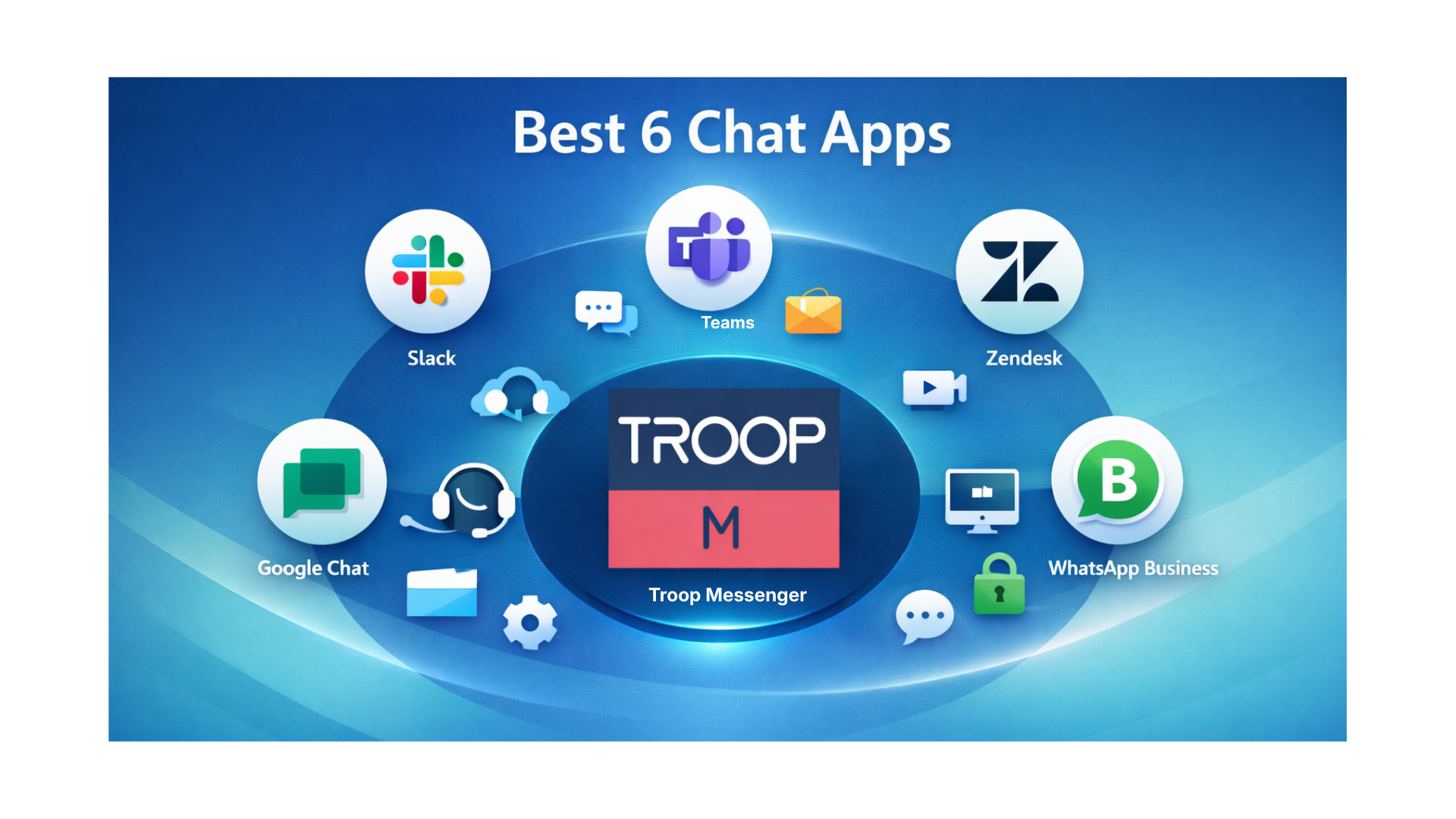Connect with us

What is the Perfect Skype for Business Replacement?
It's been almost two years since Microsoft announced their plan to replace Skype for Business with the new collaboration tool, Microsoft Teams.
Though Microsoft Teams is the fastest-growing tool ever to arrive as part of the Microsoft ecosystem, that doesn't necessarily mean you and your company will feel comfortable using it instead of Skype. After all, we all have our own unique preferences when it comes to collaboration tools.
For now, Microsoft won't be forcing anyone to leave the Skype for Business environment straight away. However, if you haven't started planning the next step in your roadmap yet, now is the time to start.
Table of Contents
Migrating away from Skype for Business
Skype for Business has been a part of the Microsoft portfolio since the 11th of November 2014.
The application appeared on the marketplace as a replacement for Lync and offered companies an easy way to manage communication via instant messaging, video calls, and more.
Today, many organizations still look at Skype for Business as the go-to service for collaboration - particularly if they're already familiar with the Microsoft productivity suite. However, as the workplace has evolved, Microsoft has recognized a need for new features and functionality. By introducing Teams and replacing Skype for Business, the Microsoft brand is updating its collaboration solution to provide everything from call management, to artificial intelligence.
So, does that mean that everyone who uses Skype for Business should automatically move to Microsoft Teams?
Not necessarily.
There are plenty of other great tools out there that may deliver a better experience depending on your individual needs. Just look at Troop Messenger, for instance, this user-friendly team chat app is a simple and accessible way to keep teams connected.
With Troop, you can:
- Find crucial files instantly
- Rely on a secure breach-proof code to keep your chat safe
- Integrate your experience with third-party apps for a DIY solution
- Get helpful support from a committed team
- Chat and communicate seamlessly in real-time.
How to choose a Skype for Business Replacement
According to surveys by the Institute for Corporate Productivity, 22% of companies rely on real-time collaboration solutions for online meetings and consistent communication. The right software gives your employees more than just real-time messaging; it also ensures that everyone in your team can stay on the same page, regardless of where they are.
As the demand for collaboration tools continues to rise, transitioning away from Skype for Business can't be a passive experience for modern brands. Just like any other major investment, it's important to consider all of your options.
Here are a few of the crucial steps you'll need to take when choosing a Skype for Business replacement.
1. Determine what your employees need
Implementing the best collaboration or enterprise chat tool isn't just about choosing the software with the latest technology or best price tag. You'll need to think about the problems you want to solve for your team. For instance, if your remote workers often feel isolated from the rest of the team, an app that prioritizes video conferencing might be a good choice.
If you're concerned that you won't be able to keep your globally-dispersed workforce on the same page, a collaborative tool that allows employees to track changes to recent projects, set deadlines, and assign tasks may be helpful.
Find out how your employees work, what they struggle with each day, and what they need to become more productive and efficient.
2. Get your team involved
Even if most of your employees use Skype for Business to stay connected to their coworkers, there's a good chance that there are a handful of people out there using different tools. As mentioned above, today's team member has their own personal preferences when it comes to collaboration tools. Asking for insights from your workers will help you to find out which software they already like or feel comfortable using.
Getting your team involved with choosing the right collaborative tools will help you to plan your new investment based on what your employees want and need. For instance, ask your teams to list the kind of tools they like using or provide information based on the software they've tried in the past.
3. Evaluate a wide selection of options
Often, when companies have been using something like Skype for Business for an extended period, it's easy to feel tied to a specific product portfolio. If you're already used to Microsoft software, then migrating to Microsoft Teams might seem like the easiest option.
However, the truth is that since implementing Skype for Business, there's a good chance that your needs and expectations for collaboration tools have changed. That's why it's crucial to check out all of the options available on the market, before committing to something just because it's familiar. Shortlist solutions that match your requirements and focus on finding the right mixture of available features, ease of use, and scalability. Ideally, the right collaboration tool will allow you to add and remove features as your business changes.
4. Consider software integrations
Another point to consider when you're looking for a replacement to Skype for Business is what kind of integrations you'll need. Collaboration tools make up a crucial part of the Unified Communication environment for your business. However, your company can't be truly unified if your employee's favourite software doesn't work alongside their enterprise chat tools.
Think about the CRM and ERP systems your people use every day. Will your new collaboration software work hand-in-hand with those tools? Can you implement the analytics software you rely on each day into your enterprise chat so that people can comment on your findings?
Integrations allow for more efficient workflows in virtually any business environment. Make sure your chosen application plays well with others. You could even look at combining various enterprise chat tools using a syncing tool like Mio.
5. Measure the impact
Remember, when you do implement a new tool into your business environment, no matter whether it's a collaboration app or a new analytics service, it's important to measure the results. Roll your team tool out to a few select users at first and see how they respond to it. A free or trial version of some of your shortlisted apps will come in handy here.
The more comfortable your people feel using the tools you offer to replace Skype for Business, the less likely they'll be to seek out alternative solutions on their own. The last thing you want is issues with shadow IT to worry about when you aim to reduce silos in your workplace.
What is the Best Skype for a Business alternative?
Now that you know how to assess your Skype for Business alternatives, it's time to start looking at your options.
There are dozens of potential enterprise chat tools to choose from on the market today. Here are just some of the best-known and most popular options that previous Skype for Business users might want to try:
Go To Meeting
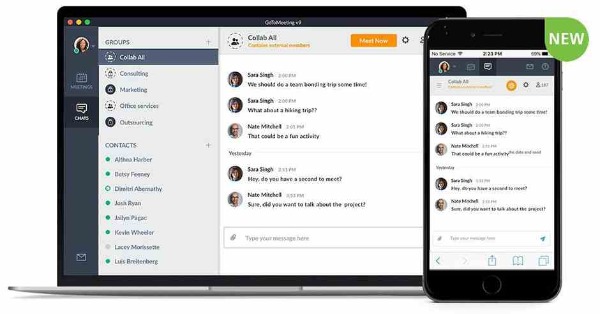
Created by the Go To brand, GoToMeeting is one of the best-known collaboration tools on the market today.
The app earned a reputation for simplicity and accessibility, by giving businesses a way to connect with colleagues, contractors, and customers with nothing but a custom link.
With GoToMeeting, you can schedule conferences for any time or place you choose. Additionally, attendees can join from a computer, laptop, tablet or smartphone. There's even support for HD video conferencing for up to 25 people per session.
Some of the features you can expect from GoToMeeting include:
- Personal meeting rooms
- One-click conference sessions
- HD video conferencing
- Desktop or mobile access
- Desktop/Application sharing
- Virtual whiteboarding
Cisco Webex Teams
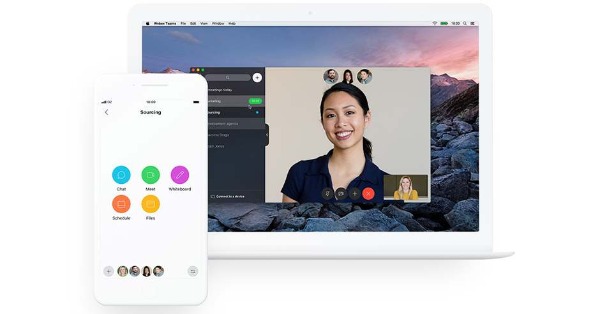
Cisco Webex Teams is the natural step into cloud collaboration for users of Cisco Jabber.
Formerly Cisco Spark, Webex Teams offers full team messaging functionality. This includes one-to-one persistent chat, team messaging, and interactive meetings inclusive of Cisco whiteboard experiences familiar to users of the Cisco Spark Board, now the Webex Teams board.
For users with Cisco VoIP handsets, conferencing solutions, and telepresence devices, Webex Teams integrates with most devices in the portfolio to provide a streamlined, consistent experience.
New features recently announced for Webex Teams include:
- People insights
- Live motion video
- Share anywhere with Webex Share
- New VDI client
- Improved video
Slack
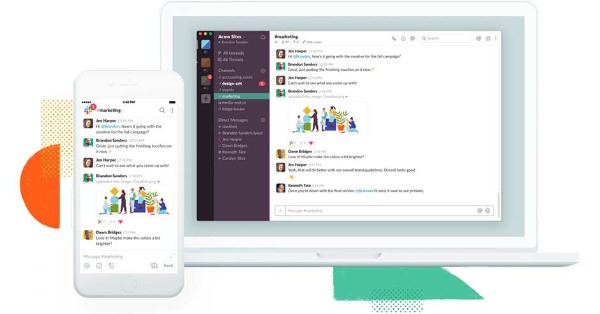
Slack is often touted as the pioneer of team messaging. As one of the first persistent chat platforms, Slack has the upper hand when it comes to user experience and integrations as they’ve had longer to experiment and get it right.
Even down to the recently introduced Slack dark mode, Slack is always striving to improve its look and feel.
Another recent introduction is Enterprise Key Management (EKM). This has been introduced to satisfy the security requirements of large enterprises that had previous concerns over data retention.
Slack describes EKM as “providing all of the security of an on-premise solution, with all the benefits of a cloud tool.”
Key features of Slack include:
- Automated reminders
- Task list management
- Custom shortcuts
- Many, many bot integrations
- Search channels for keywords and important documents
Viber for Business
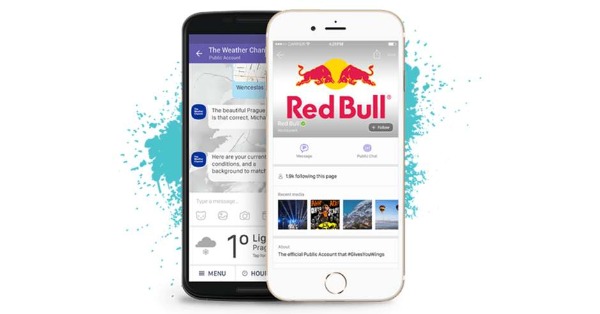
Viber for Business completes the Skype for Business alternatives when looking for a collaboration or team chat environment.
Viber should be considered for businesses that have a large presence in Russia or the APAC region.
Viber’s consumer app has over 1 million users and users will benefit from the familiar look and feel – remind anyone of Skype before Skype for Business?
Key features of Viber for Business include:
- HD voice and video
- Texts, photos, GIFs, and stickers
- Voice and video clips that can be sent later
- Call recording
Hive
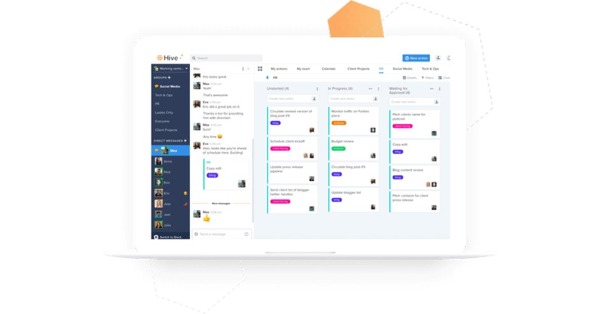
Hive combines a unique blend of project management and team collaboration to provide teams the ability to manage their projects in the way they work best.
Configurable views are available to switch easily to ultimate flexibility.
Supporting Gantt, Kanban, and an assortment of tables, Hive then integrates into over 1000 other productivity apps like Salesforce, HubSpot, and Marketo.
Key features include:
- Direct and Group Messaging (Private and Public Groups)
- Task Management
- File Integration with Google Drive, Dropbox, Box, and One Drive
- Email Integration
- Notes
This is a starter for 10. Well, 5 actually.
Author Bio:

Dominic Kent is the Director of Content Marketing and Communications at Mio. Mio powers seamless communication between workplace chat apps like Slack, Cisco Webex Teams, and Microsoft Teams.



